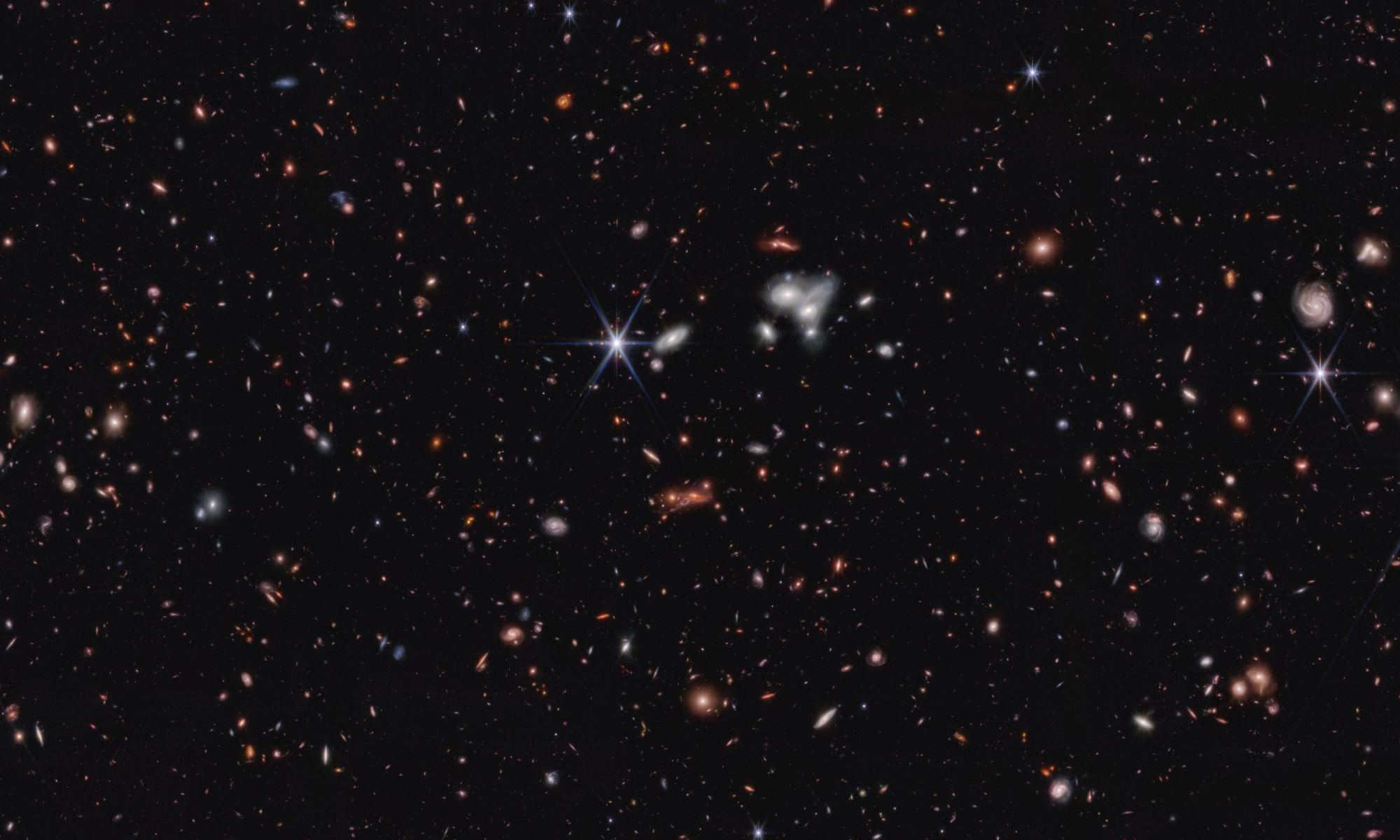As astronomers push our views of the Universe further back in time, their telescopes keep uncovering surprises. That’s the case with a supermassive black hole in CEERS 1019, a distant very early galaxy.
How early? It already existed and was assembling itself some 570 million years after the Big Bang. The James Webb Space Telescope (JWST) caught a glimpse of it and studied its black hole. It also took data about two other black holes as they were when the Universe was about a billion years old.
These galaxy and black hole discoveries are part of a special observing program with JWST. It’s called the Cosmic Evolution Early Release Science (CEERS) Survey. The idea is to get detailed images and spectra of early, distant objects in infrared and mid-infrared light. Objects in the very early universe shine in ultraviolet and visible light. However, by the time their light reaches us, it’s “stretched” into the infrared regime. Since infrared also can penetrate through dusty regions, it gives the added advantage of seeing objects that otherwise would be hidden.
Finding black holes in the early universe in early galaxies opens up our understanding of that time in cosmic history. It is shortly after the Big Bang. For example, this newly found CEERS galaxy and its active supermassive black hole surprised astronomers. CEERS 1019 existed at a time when the first galaxies were forming. So, they should be small and relatively featureless, right? And, if they have black holes at that early epoch, those should be relatively low-mass (for black holes, that is). Right?
A Baby Galaxy and Its Black Hole
Well, it’s complicated. It turns out that those black holes ARE lower-mass. But, at least one of them is still larger than it should be. How do we know this? JWST can study both early galaxies and their black holes, according to Steve Finkelstein, PI of the CEERS survey. “Until now, research about objects in the early Universe was largely theoretical,” he said. “With Webb, not only can we see black holes and galaxies at extreme distances, we can now start to accurately measure them. That’s the tremendous power of this telescope.”

So, how do CEERS 1019 and its black hole measure up? The galaxy itself appears as three bright clumps without a disk. So, it’s really still assembling itself and cranking out new stars as it builds its structure. “We’re not used to seeing so much structure in images at these distances,” said CEERS team member Jeyhan Kartaltepe, an associate professor of astronomy at the Rochester Institute of Technology in New York. “A galaxy merger could be partly responsible for fueling the activity in this galaxy’s black hole, and that could also lead to increased star formation.”
And that infant supermassive black hole? It’s quite busily ingesting gas and turns out to have 9 million solar masses. That’s less than some black holes of its era but still larger than expected. It exists so early in history that it seems to have formed very shortly after the Universe began, which is intriguing.
Interestingly, the black hole turns out to be more like Sagittarius A*, the one in the center of the Milky Way. And, that’s exciting even while it’s still puzzling. “Looking at this distant object with this telescope is a lot like looking at data from black holes that exist in galaxies near our own,” said Rebecca Larson, a recent Ph.D. graduate at UT Austin, who led the study of these objects. “There are so many spectral lines to analyze!”
About Those Spectral Lines
While the infrared view shows us the structure of the galaxy, the spectral lines reveal other characteristics. For example, spectra can pinpoint high-energy outflow speeds and temperatures. In the case of CEERS 1019, the spectroscope captures both the black hole and its host galaxy. Its data reveal the black hole’s appetite for gas as well as the star-formation rate. It will be interesting to see if this scenario plays out in other galaxies in the CEERS survey. In the meantime, however, these first discoveries are priming astronomers to refine their ideas about black holes and galaxy formation in the infant universe.

In particular, CEERS focuses on these objects as they existed in the Epoch of Reionization. That’s a point in cosmic history when light began to travel freely across the expanding universe. That light came from the first stars and ionized the gas between stars and galaxies. It also appears that galaxies began assembling during this time (and perhaps earlier) as well. The survey data covers the build-up of stars (stellar mass), the morphological changes in the galaxies as a result, as well as the growth of those early black holes. So, studying this period is key to tracing a timeline of the Universe’s origins and evolution through the buildup and transformation of those earliest galaxies. This is one of the key aims of the JWST, which is just finishing its first full year of observing the infrared universe.
For More Information
Webb Telescope Detects Most Distant Active Supermassive Black Hole
Focus on the Cosmic Evolution Early Release Science (CEERS) JWST Survey
Webb Detects Most Distant Active Supermassive Black Hole to Date

